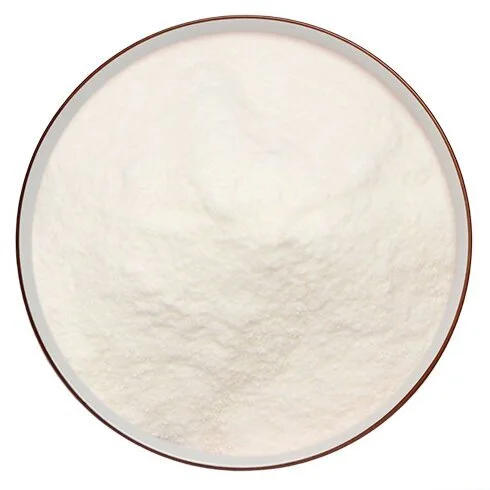Taurine CAS 107-35-7
TAURINE
Taurine, also known as beta-aminoethylsulfonic acid, was first isolated from bile and thus got its name. It appears as a colorless or white prismatic crystal, is odorless, has stable chemical properties, and is soluble in organic solvents such as ether. It is a sulfur-containing non-protein amino acid that exists in the body in a free state and does not participate in the biosynthesis of proteins in the body. Although taurine does not participate in protein synthesis, it is closely related to the metabolism of cystine and cysteine.
Product Details
Taurine CAS 107-35-7
| Test Item | Specification | Results |
| Colour | White | White |
| Odor | Odorless | Odorless |
| Appearance | Crystalline or crystalline powder | Crystalline powder |
| Taurine(C2H7NO3S, on dried basis)/% | 98.5-101.5 | 99.9 |
| Conductivity(μs .cm-¹) | ≤150 | 36.2 |
product superiority
1. High purity and stability ——Taurine is usually supplied in the form of white crystalline or powder form with high purity (e.g. HPLC ≥ 98%), is stable to heat, has a melting point above 300℃, and is easily soluble in water.
2. Multifunctionality ——As a conditionally essential amino acid, taurine plays significant biochemical/physiological roles in regulating intracellular calcium concentration, protecting the heart and retina, promoting bile formation and fat digestion.
3. High safety——Taurine has a relatively high level of safety. The oral LD50 for mice is greater than 10g/kg, and it is widely used as a nutritional supplement in food and feed.It is non-toxic to the fetus and has no genetic toxicity. It can also be used by infants, pregnant women and breastfeeding mothers.
4. Physiological activity spectrum, mechanism clear——It belongs to sulfur-containing β-amino acids, existing in the body in free form. It can be absorbed rapidly and does not rely on protein digestion. The bioavailability is high; it also possesses four basic mechanisms: "membrane stability, osmotic regulation, calcium ion balance, and antioxidant".
application scenarios
1. Food Industry——As a nutritional fortifier, taurine is added to food products, especially in infant formula foods, to supplement the insufficient nutrients in breast milk.
2. Research experiment——Taurine is commonly used in laboratory studies, such as experiments on the isolation and growth of photosynthetic bacteria, pharmacological experiments, etc. It is an important biochemical reagent.
3. Medicine and Health——Taurine has the functions of strengthening the liver and promoting bile secretion, lowering blood pressure, strengthening the heart, etc. It can be used for the prevention and treatment of iron deficiency anemia, protecting the liver, alleviating anxiety and depression, etc.
4. Feed Additives——As an amino acid additive, taurine can optimize the structure of the animal's intestinal flora, promote growth, and enhance feed utilization.
FAQ
The target market of our brand has been continuously developed over the years. For more information, please reach our team, we are more than happy to help.
With a professional and experienced team, coupled with strong technical support from our partnerships with research institutes, we excel in developing innovative chemical products for our customers. If you are seeking to source new products, we are undoubtedly your ideal choice.

















